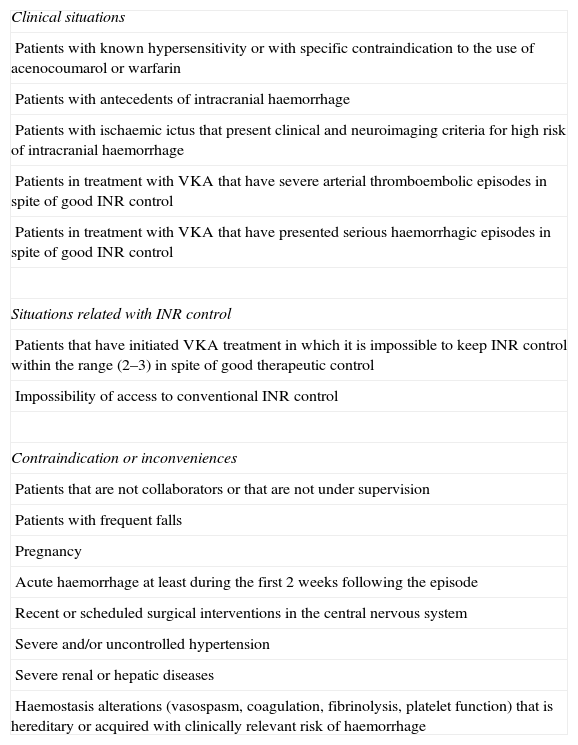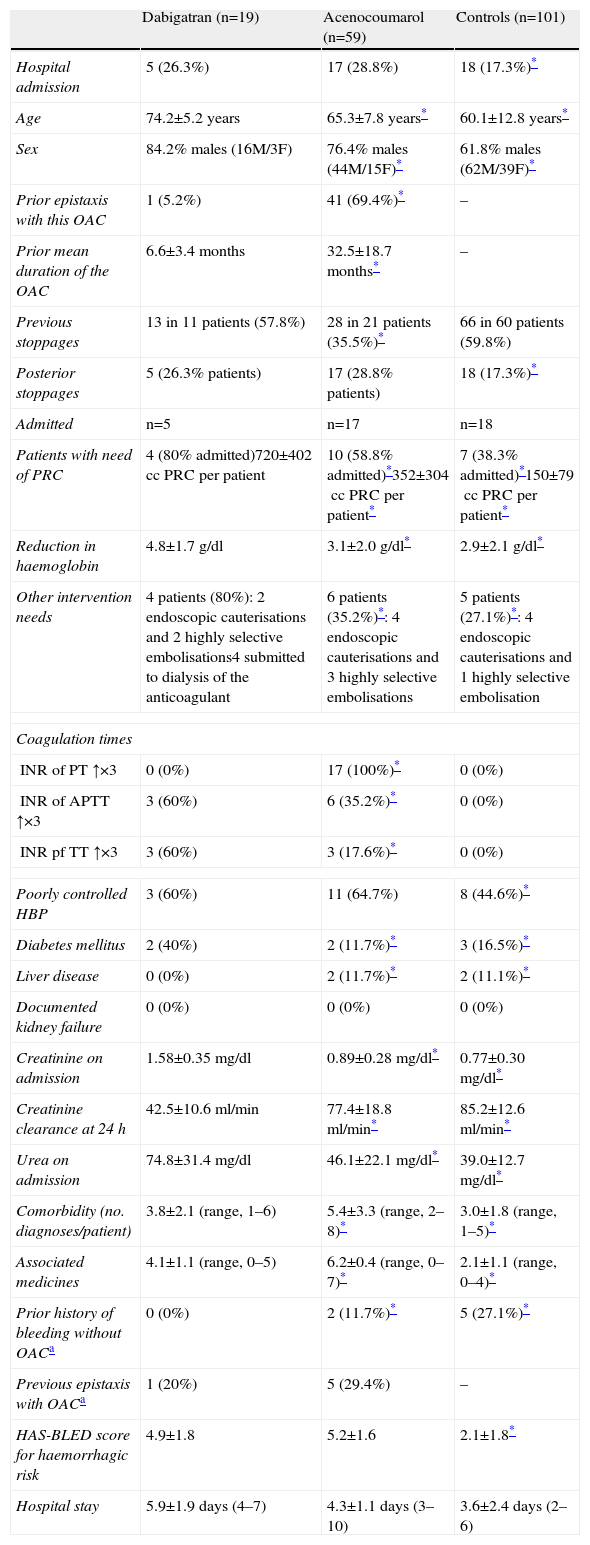Dabigatran is a new non-vitamin K antagonist (VKA) anticoagulant with anti-thrombin action, with supposedly fewer haemorrhagic complications. However, there are actually no established agents to reverse its effect, nor specific coagulation time tests for monitoring it.
Materials and methodsAn observational prospective study was developed, noting epidemiological, clinical and therapeutic features among subjects with epistaxis treated with dabigatran. Results were compared with a group of epistaxis cases of individuals under anticoagulant therapy with VKA (acenocoumarol) and a control group without anticoagulation.
ResultsSince its inclusion in our health system almost 3 years ago, 19 patients with epistaxis and concomitant use of dabigatran have been attended at the Emergency Unit in our hospital, as against 59 under VKA therapy and 144 without anticoagulation, with a mean admittance rate of 26%, 28%, and 14%, respectively. In 3 out of 5 individuals admitted due to dabigatran treatment, previously unobserved renal failure was detected. Blood transfusion was needed in 80% of patients using dabigatran, 58% using VKA, and 23% without anticoagulation. Invasive procedures to control nosebleed were required in 80%, 35%, and 21%, respectively. Although haemorrhagic risk was lower in dabigatran cases, they showed the longest stay in the hospital when compared to the other groups.
ConclusionsWith dabigatran, there are fewer cases of severe epistaxis than with acenocoumarol, but controlling them is more difficult.
Dabigatrán es un nuevo anticoagulante no antivitamina K con efecto antitrombina. Se le atribuyen menos efectos secundarios hemorrágicos, pero no presenta antídoto que revierta su función ni tiempos de coagulación específicos que lo monitoricen.
Materiales y métodosEstudio longitudinal observacional prospectivo anotando las características epidemiológicas, clínicas y terapéuticas más relevantes entre los sujetos tratados con dabigatrán que manifestaron epistaxis. Se compararon resultados frente a un grupo de casos de epistaxis bajo terapia anticoagulante con acenocumarol y otro de epistaxis en controles no anticoagulados.
ResultadosDesde su inclusión en el Sistema Nacional de Salud hace casi 3 años dabigatrán ha hecho acudir a urgencias de nuestro centro a 19 sujetos por epistaxis, frente a 59 por acenocumarol y 144 no anticoagulados, con ingresos hospitalarios del 26, 28 y 14%, respectivamente. En 3 de los 5 ingresados tratados con dabigatrán se detectó insuficiencia renal, previamente no documentada. Precisaron transfusión de hemoderivados el 80% de los tratados con dabigatrán, 58% con acenocumarol y 23% no anticogulados, y procedimientos invasivos el 80, 35 y 21%, respectivamente. Aunque el riesgo hemorrágico fue menor para dabigatrán, la estancia hospitalaria fue mayor frente a acenocumarol, y este frente a no anticoagulados.
ConclusionesDabigatrán ofrece menos casos severos de epistaxis que acenocumarol, pero resultan más difíciles de controlar y revertir.









